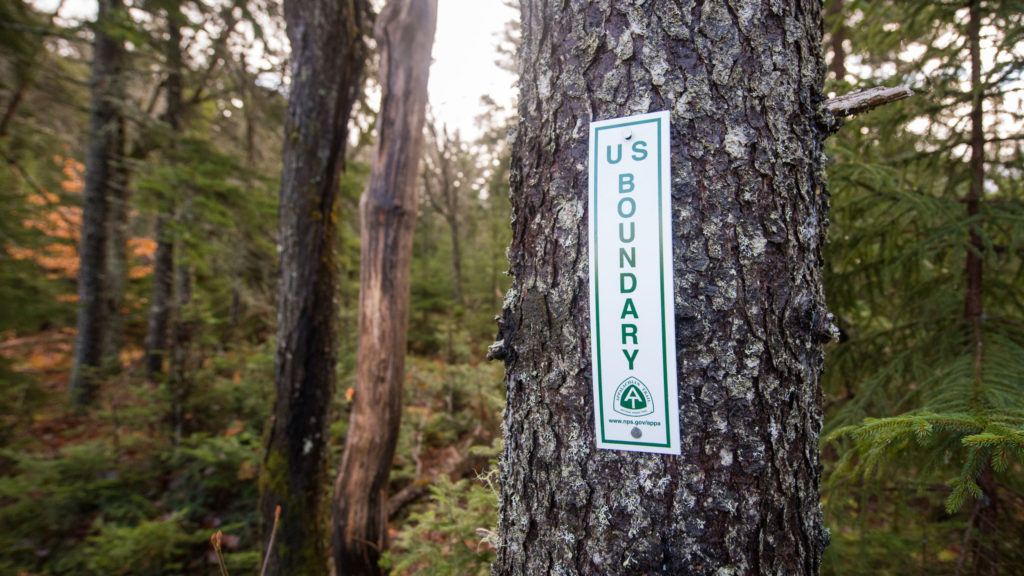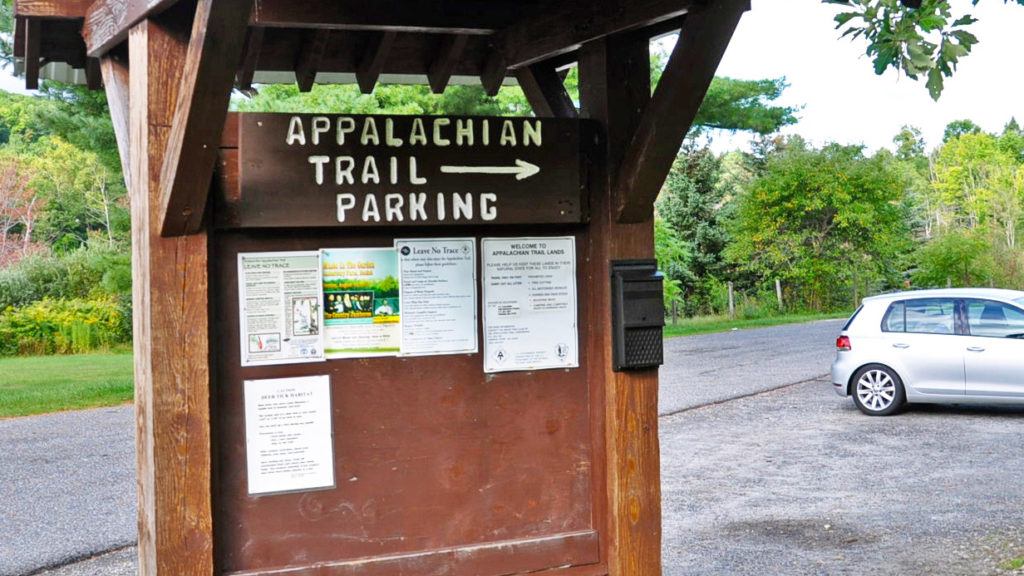New Perspectives on the Appalachian Trail
June 29, 2023
The Appalachian Trail is a multigenerational project.
Throughout its 102-year history, maintenance and management of the Trail have passed through at least six generations—from Benton MacKaye’s to members of the Greatest Generation, Silent Generation, Baby Boomers, Generation X, and Millennials.
In January 2023, the first member of Congress from Generation Z, Maxwell Frost (FL-10), was sworn in. As a new generation begins to assume societal leadership roles, what are their thoughts about inheriting responsibility for the A.T.? And more broadly, what expectations do they have for the continued protection of public lands used for outdoor recreation?
We recently sat down with two young adults pursuing careers in environmental conservation to hear their thoughts, ideas, and concerns.

Simon Heinberg is a former philanthropy manager at the ATC and will enroll in fall 2023 in the Master of Environmental Management program at the Nicholas School of the Environment at Duke University. Simon grew up in New York City and holds a degree in philosophy from Pomona College.
Lauren Wiggins received her Master of Environmental Management from the Yale School of the Environment in May 2023. She is a member of the ATC’s Next Generation Advisory Council. A native of Atlanta, Georgia, Lauren received a bachelor’s in health science, public health, and international affairs at Tennessee State University.
Q: What do you remember about your first A.T. experience?
Lauren: When I was in college I spent two months one summer in the White Mountains in New Hampshire as an intern for an environmental research project. Our group of interns went hiking three or four times a week. As a city person, I was amazed at the peace and stillness on the Trail. I remember sitting by the side of a stream and watching blue and black butterflies land on me. I felt like I was in a completely different world, experiencing another dimension of existence. It reminded me why I care so much about environmental advocacy.
Simon: My first time on the Appalachian Trail was also in the White Mountains. I grew up in New York City, and from a young age I always yearned to escape the city and spend time outdoors. When I was 10 or 11, I went on my first camping trip along the Appalachian Trail in the Whites. We are lucky to have started out on one of the most beautiful parts of the Trail!
Lauren: My most intense experience on the Trail was after I joined the ATC’s Next Generation Advisory Council. We did an 11-mile out-and-back hike from Amicalola Falls. I remember worrying beforehand if I had the right gear to enjoy it. But once I stepped on the Trail, it felt wonderful to be surrounded by so much vegetation, to feel the ground beneath my feet. The A.T. is such a special place, and so few people know about it.
Some of the most peaceful moments in life happen in the outdoors. That is true for everyone, including those in the most marginalized communities.
–Lauren Wiggins
Q: What are the greatest challenges that public lands like the Appalachian Trail are encountering today?
Simon: One obvious challenge is climate change, which is posing an imminent threat to all public lands. The A.T. is fortunate because the forest in the East Coast is more climate resilient and won’t face the same degree of wildfire risk that forests out west will. Another challenge to the Trail, which stems from its location in the East, is development encroachment. The Trail corridor — the protected land on either side of the footpath — is incredibly narrow in some places. The ATC is working to widen the corridor every year by protecting new lands, but there are still many sections of the Trail where the surrounding land is unprotected. Most people who hike on the Trail don’t realize that.

The protective corridor on either side of the Trail is very narrow in some places. The ATC is working to widen it through a collaborative approach to conservation. Photo by Horizonline Pictures
Lauren: I’m also concerned about encroaching development. In addition to the large cities within a half-day’s drive, the small communities adjacent to the Trail can still have issues with urban runoff contaminating local water supplies, for example. The lack of environmental literacy is also a big challenge. I wonder if people would continue to treat lands in a dismissive manner if they knew more about what makes an ecosystem work, how it supports us, and what it needs to thrive. We protect things if we know how our behavior can impact them, positively or negatively.
Q: So, do we need more environmental education to overcome or address these challenges?
Lauren: Yes, in fact, perhaps environmental values need to be institutionalized. Throughout my K-12 education, we never went into the forest or talked about what it means to be stewards of it. That’s a simple educational objective that could be incorporated into existing requirements to teach kids biology or earth sciences. There could be a stewardship component that explains what happens when you leave a candy wrapper on the ground, for example.
Simon: I agree incorporating environmental education into K-12 curriculums would help. I think there are challenges with promoting environmental literacy outside the classroom. Cost can be prohibitive for some people who want to take outdoor educational courses, such as wilderness first aid or preparedness courses. We also can’t put up a bunch of signs along the Trail to educate people about staying on the footpath, in order to minimize erosion or protect the surrounding ecosystem. That would adversely impact the Trail experience. The ATC is working to make outdoor education more accessible by hosting free volunteer trainings and conducting outreach to ensure those trainings reach underrepresented audiences.
Lauren: Education is also a conduit to experience. We want our students to learn about the forest — and in the forest. Field trips need to include time in the outdoors. That should be standardized and prioritized for the most marginalized in our society, who are the least likely to go to a national park.
Q: As the U.S. population continues to become more racially and ethnically diverse, what can be done to help make outdoor spaces feel more inclusive?
Lauren: There are some practices in place today that are already helping. The ridge runners, for example, make a huge difference in helping me feel safe. Knowing that there are people on the Trail who can answer my questions or help me get more out of my experience offers peace of mind. It would be great if that program could be expanded. One of the main barriers to outdoor recreation is the gear and how expensive it is. Perhaps a gear swap or loan program could be set up for people who don’t have discretionary income or who want to try out hiking before committing to it as a hobby.

Needing a car to access public lands can be a barrier to making outdoor spaces more inclusive.
Simon: The fact that in most cases you need a car to access public lands creates a barrier. I agree that the gear is prohibitively expensive, but that’s mostly true for equipment needed for overnight camping or multi-day hikes. There’s also an outdoor culture, with its own jargon and insider know-how, and that culture is very white. I think creating opportunities for people to enjoy the outdoors among groups or communities that aren’t predominately white can make the outdoors more accessible. I know the ATC has co-hosted events with Latino Outdoors, and there are many other incredible organizations working to make public lands more inclusive.
Lauren: I also think it would help to facilitate opportunities for people to explore the outdoors in groups based on a particular affinity — your professional affiliation or ethnic identity. These groups do exist, but some of them seem to be more active out west.
This article is excerpted from the version published in the Spring 2023 edition of A.T. Journeys magazine. Become a member today to help fund great storytelling about the Appalachian Trail and the community of doers and dreamers who ensure the Trail is protected forever, for all.





